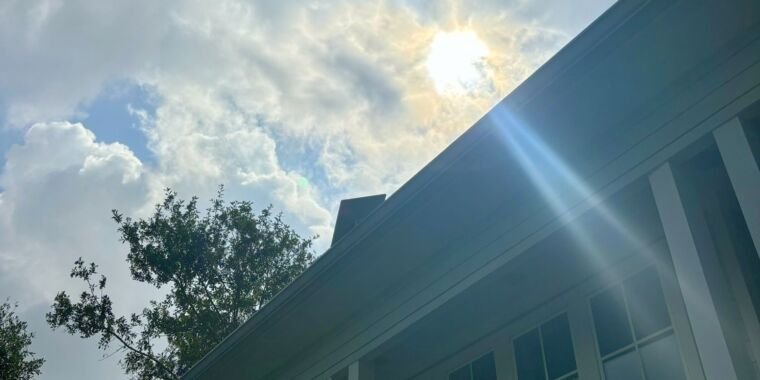Beryl is just the latest disaster to strike the energy capital of the world

Eric Berger
I’ll readily grant you that Houston might not be the most idyllic spot in the world. The summer heat is borderline unbearable. The humidity is super sticky. We don’t have mountains or pristine beaches—we have concrete.
But we also have a pretty amazing melting pot of culture, wonderful cuisine, lots of jobs, and upward mobility. Most of the year, I love living here. Houston is totally the opposite of, “It’s a nice place to visit, but you wouldn’t want to live there.” Houston is not a particularly nice place to visit, but you might just want to live here.
Except for the hurricanes.
Houston is the largest city in the United States to be highly vulnerable to hurricanes. At a latitude of 29.7 degrees, the city is solidly in the subtropics, and much of it is built within 25 to 50 miles of the Gulf of Mexico. Every summer, with increasing dread, we watch tropical systems develop over the Atlantic Ocean and then move into the Gulf.
For some meteorologists and armchair forecasters, tracking hurricanes is fulfilling work and a passionate hobby. For those of us who live near the water along the upper Texas coast, following the movements of these storms is gut-wrenching stuff. A few days before a potential landfall, I’ll find myself jolting awake in the middle of the night by the realization that new model data must be available. When you see a storm turning toward you, or intensifying, it’s psychologically difficult to process.
Beryl the Bad
It felt like we were watching Beryl forever. It formed into a tropical depression on June 28, became a hurricane the next day, and by June 30, it was a major hurricane storming into the Caribbean Sea. Beryl set all kinds of records for a hurricane in late June and early July. Put simply, we have never seen an Atlantic storm intensify so rapidly, or so much, this early in the hurricane season. Beryl behaved as if it were the peak of the Atlantic season, in September, rather than the beginning of July—normally a pretty sleepy time for Atlantic hurricane activity. I wrote about this for Ars Technica a week ago.
At the time, it looked as though the greater Houston area would be completely spared by Beryl, as the most reliable modeling data took the storm across the Yucatan Peninsula and into the southern Gulf of Mexico before a final landfall in northern Mexico. But over time, the forecast began to change, with the track moving steadily up the Texas coast.
I was at a dinner to celebrate the birthday of my cousin’s wife last Friday when I snuck a peek at my phone. It was about 7 pm local time. We were at a Mexican restaurant in Galveston, and I knew the latest operational run of the European model was about to come out. This was a mistake, as the model indicated a landfall about 80 miles south of Houston, which would bring the core of the storm’s strongest winds over Houston.
I had to fake joviality for the rest of the night, while feeling sick to my stomach.
Barreling inland
The truth is, Beryl could have been much worse. After weakening due to interaction with the Yucatan Peninsula on Friday, Beryl moved into the Gulf of Mexico just about when I was having that celebratory dinner on Friday evening. At that point, it was a strong tropical storm with 60 mph sustained winds. It had nearly two and a half days over open water to re-organize, and that seemed likely. Beryl had Saturday to shrug off dry air and was expected to intensify significantly on Sunday. It was due to make landfall on Monday morning.
The track for Beryl continued to look grim over the weekend—although its landfall would occur well south of Houston, Beryl’s track inland would bring its center and core of strongest winds over the most densely populated part of the city. However, we took some solace from a lack of serious intensification on Saturday and Sunday. Even at 10 pm local time on Sunday, less than six hours before Beryl’s landfall near Matagorda, it was still not a hurricane.
However, in those final hours Beryl did finally start to get organized in a serious way. We have seen this before as hurricanes start to run up on the Texas coast, where frictional effects from its outer bands aid intensification. In the last six hours Beryl intensified into a Category 1 hurricane, with 80-mph sustained winds. The eyewall of the storm closed, and Beryl was poised for rapid intensification. Then it ran aground.
Normally, as a hurricane traverses land it starts to weaken fairly quickly. But Beryl didn’t. Instead, the storm maintained much of its strength and bulldozed right into the heart of Houston with near hurricane-force sustained winds and higher gusts. I suspect what happened is that Beryl, beginning to deepen, had a ton of momentum at landfall, and it took time for interaction with land to reverse that momentum and begin slowing down its winds.
First the lights went out. Then the Internet soon followed. Except for storm chasers, hurricanes are miserable experiences. There is the torrential rainfall and rising water. But most ominous of all, at least for me, are the howling winds. When stronger gusts come through, even sturdily built houses shake. Trees whip around violently. It is such an uncontrolled, violent fury that one must endure. Losing a connection to the outside world magnifies one’s sense of helplessness.
In the end, Beryl knocked out power to about 2.5 million customers across the Houston region, including yours truly. Because broadband Internet service providers generally rely on these electricity services to deliver Internet, many customers lost connectivity. Even cell phone towers, reduced to batteries or small generators, were often only capable of delivering text and voice services.
Source link




